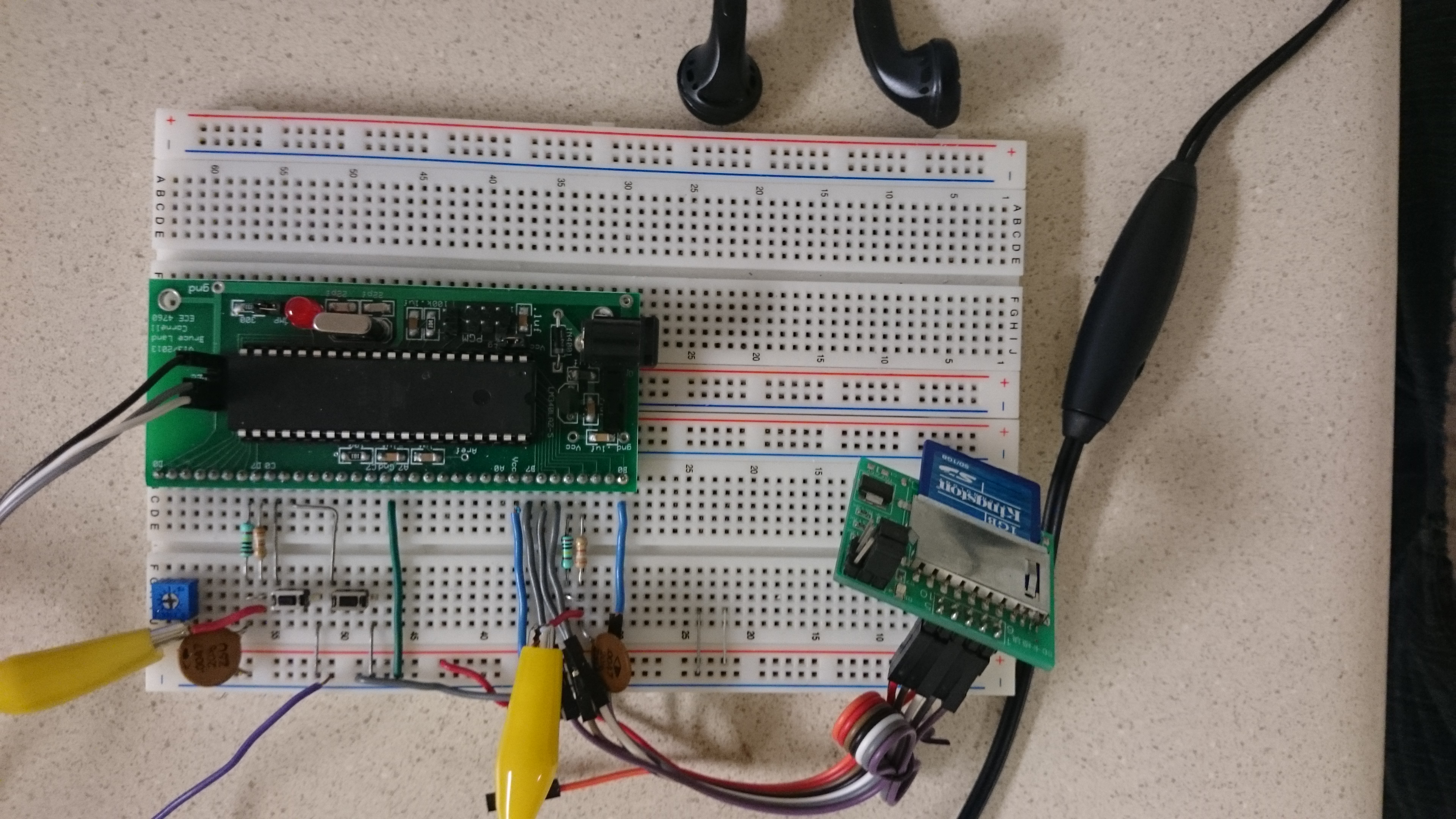
Make an MP3 player based on AVR microcontroller
Global electronic component supplier AMPHEO PTY LTD: Rich inventory for one-stop shopping. Inquire easily, and receive fast, customized solutions and quotes.
Here's a comprehensive guide to creating an MP3 player using an AVR microcontroller:

System Overview
This design uses:
-
AVR microcontroller (ATmega32 or similar)
-
VS1053 MP3 decoder chip
-
SD card for storage
-
LCD display
-
Control buttons
-
Audio output circuit
Hardware Components
-
Microcontroller: ATmega32 (or ATmega328P)
-
32KB flash, 2KB SRAM, 1KB EEPROM
-
Enough processing power for MP3 player control
-
-
MP3 Decoder: VS1053
-
Handles MP3, WMA, OGG, AAC decoding
-
Built-in headphone amplifier
-
SPI interface for control
-
-
Storage: MicroSD card (2GB+ recommended)
-
FAT16/FAT32 file system
-
SPI interface
-
-
Display: 16x2 Character LCD
-
Shows track info, playback status
-
-
Controls:
-
Play/Pause button
-
Next/Previous track buttons
-
Volume up/down buttons
-
-
Power Supply:
-
3.3V for VS1053 and SD card
-
5V or 3.3V for microcontroller
-
Circuit Connections
ATmega32 Pinout: - PB0-PB3: LCD Data (D4-D7) - PB4: LCD RS - PB5: LCD EN - PD2-PD6: Control buttons - SPI Pins (MOSI, MISO, SCK, SS): - VS1053: XCS (SS), XDCS, DREQ, MOSI, MISO, SCK - SD Card: CS, MOSI, MISO, SCK
Software Implementation
Main Components:
-
FAT File System Library:
-
Use Petit FatFs (lightweight FAT implementation)
-
Handles file operations on SD card
-
-
VS1053 Driver:
-
SPI communication
-
Initialization and configuration
-
Data streaming
-
-
User Interface:
-
Button handling
-
LCD display updates
-
Basic Code Structure (Pseudocode):
#include <avr/io.h> #include "vs1053.h" #include "ff.h" FATFS fs; // File system object FIL file; // File object VS1053 player; void main() { // Initialize hardware init_lcd(); init_buttons(); init_sd_card(); init_vs1053(); // Mount SD card f_mount(&fs, "", 0); // Main loop while(1) { // Check buttons if(play_pressed()) { if(is_playing) pause(); else play(); } if(next_pressed()) next_track(); if(prev_pressed()) previous_track(); // If playing, feed data to VS1053 if(is_playing) { if(vs1053_ready_for_data()) { read_mp3_data(&file, buffer, BUFFER_SIZE); vs1053_send_data(buffer, bytes_read); } } // Update display update_display(); } }
Detailed Implementation Steps
-
SD Card Initialization:
-
Initialize SPI interface
-
Send proper initialization sequence
-
Mount the file system
-
-
VS1053 Initialization:
-
Reset the chip
-
Set clock multiplier
-
Configure audio parameters
-
Set initial volume
-
-
File Playback:
-
Open MP3 file
-
Read data in chunks (512 bytes typically)
-
Send to VS1053 when it's ready (DREQ high)
-
Handle end of file
-
-
User Interface:
-
Scan buttons with debouncing
-
Display current track, playback time
-
Show menu if implemented
-
Challenges and Solutions
-
Power Management:
-
Implement sleep modes when idle
-
Use efficient power regulation
-
-
File System Limitations:
-
Keep file names short (8.3 format)
-
Organize files in folders if many tracks
-
-
Real-Time Performance:
-
Use interrupts for button handling
-
Optimize data transfer to VS1053
-
Enhancements
-
Additional Features:
-
Playlist support
-
Equalizer settings
-
ID3 tag reading
-
Battery level indicator
-
-
Alternative Designs:
-
Use ATmega328P with Arduino bootloader for easier programming
-
Replace LCD with OLED display for better graphics
-
Add Bluetooth module for wireless audio
-
Resources Needed
-
Development Tools:
-
AVR-GCC compiler
-
AVRDUDE for programming
-
Proteus or similar for simulation
-
-
Libraries:
-
Petit FatFs
-
VS1053 driver
-
LCD library
-
This design provides a solid foundation for an AVR-based MP3 player that can be expanded with additional features as needed. The VS1053 handles the heavy lifting of audio decoding, allowing the AVR to focus on file management and user interface.
Related Articles
- ·What is the lowest power STM32 MCU? how to choose?
- ·How do I secure an MCU from hacking or tampering?
- ·The best MCUs/MPUs for industrial humanoid robots
- ·Comparison of ARM vs. RISC-V MCUs
- ·The Difference Between 8-bit, 16-bit, 32-bit, And 64-bit Microcontrollers
- ·ESP32 vs Arduino, Compare their differences and use cases
- ·How to determine the performance limit of a microcontroller?
- ·The Complete Guide to Component Selection for Electronic Design
- ·How many programming methods are there for the STM32G431RBT6 microcontroller?
